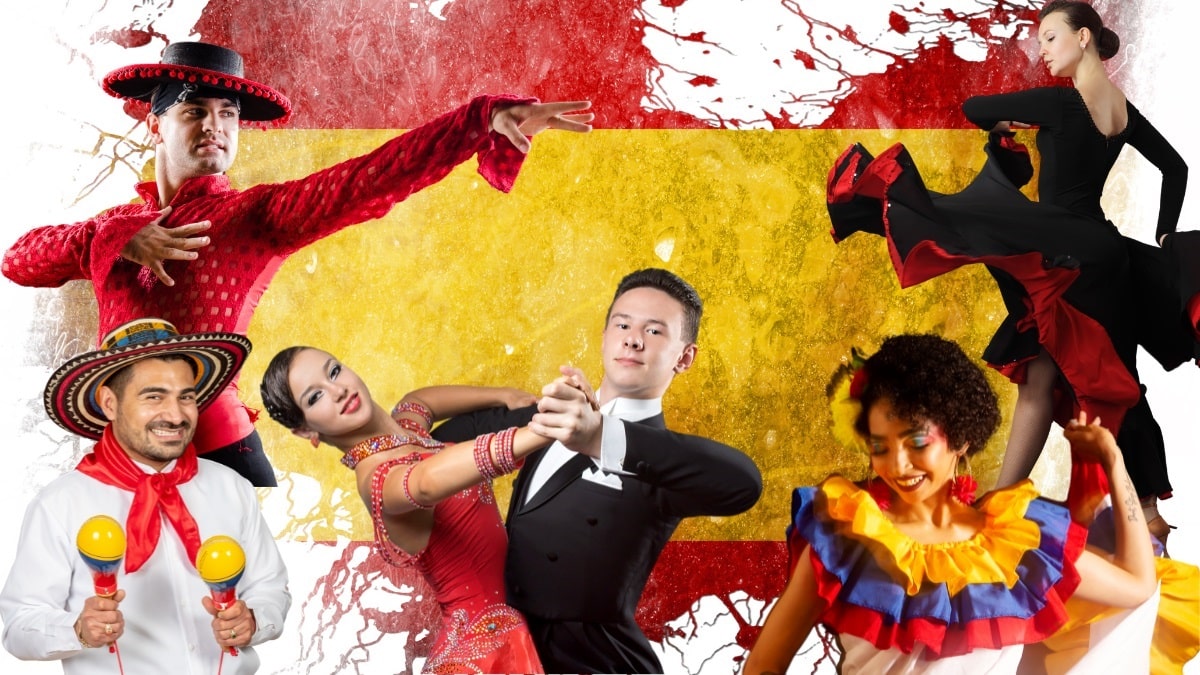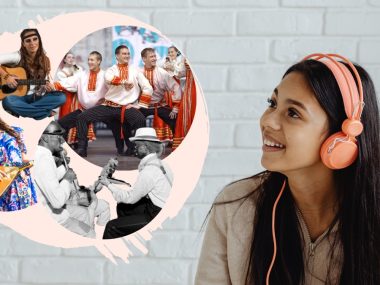Most people are easily confused between the differences in Spanish music and Latin American music, as both are typically in the same language. For example, the famous song “Despacito” is Latin American, whereas “Bailando” is Spanish.
There is a huge cultural and historical difference between both Spanish and Latin American music. The music in Latin America was heavily influenced by the European settlers in the 16th century conquests, which were brought about by the Spanish and the Portuguese. The native music was influenced by the Spanish, creating new styles of music.
How Did Spanish Music Originate?

Unique musical patterns were often provided by blown-on pipes or strings. The dominance then came from Romans and was characterized by the recitation of ancient Greek music and epic poems. The melody of Jews and Christians was blossoming during the Moors of Al-Andalus in the Iberian Peninsula.
Saint Isidore of Seville’s 6th century texts helped to capture a few of the oldest descriptions of Christian churches’ early songs. Isidore’s view that sounds can not be noted were shown to be erroneous several years later when the Visigothic neumes were used to note, in the 8th century, the church’s singing and sacred songs.
The Christian colonization saw Gregorian Papacy’s songs replace Mozarabic songs, a misleading term for early medieval Christian church music. In the late 15th century, music literature was improved by the evolution of a harmonic vocal music form in Spain. The French-Flemish compositions mirrored Spanish chromatic melodies.
From the late 17th to the 19th centuries, there was a decrease within the culture of classical music in Spain. Classicism came to Spain, with presentations in the Royal Court of Madrid, influenced by pieces by Italian composers such as Antonio Soler. At the start of the Romantic symphony in Spain, the Spanish Basque composer Juan Crisóstomo Arriaga was highlighted noticeably at the starting of Sentimental sinfonia.
While symphonies were never among the leading Spanish musicians, native composers were mostly focused on guitar as well as the piano and concentrated on chamber music, voice, opera, and single instrumentals.
Here are some of the main differences in Spanish and Latin American music:
The Cultural Diversity
The Spanish population is culturally homogeneous, thus affecting both the music and the culture. In Latin America, there is an ocean of diversity. It is an area full of various cultural influences, like the Incas, that all have different ideas about what music should be.
Popular Styles
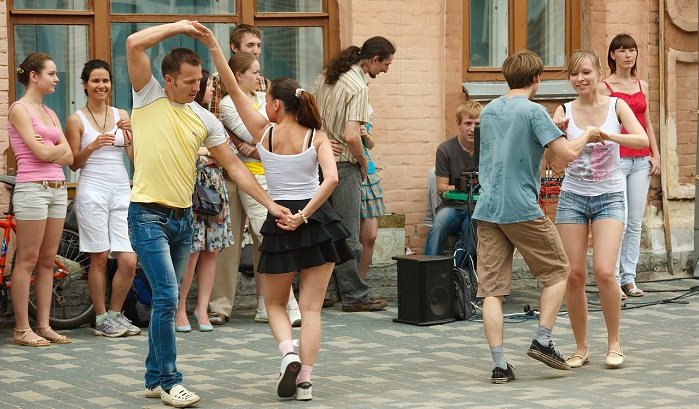
Popular Spanish styles are the flamenco, jota and zarzuela. Latin American has a highly synergistic make-up, as it has many styles such as the rumba, samba, and bachata. North America, mainly the U.S., has visible influence in Spanish music. “Havana” by Camilla Cabello shows us this influence.
Musical Culture
The message conveyed by the music is another significant difference between the two. Spanish music emphasizes celebration, tradition, and dancing, making the music a perfect choice for cultural events. This type is best for carnivals, spirited dances and concerts.
Its Latin counterpart focuses on the communication of people’s collective struggles and goals: love, revenge, sorrow, separation from the beloved, life. These are some of the themes. This characteristic makes it perfect for social and ballroom events.
The festivities in which people represent their cultural identity and symbolism are the events where Latin American music is ideal.
Variations in Instruments
Music instruments such as strings, percussion and woodwinds are featured often in both Latin American and Spanish music. The traditional Spanish guitar is said to be the precursor of the modern acoustic guitar, which often appears in traditional Spanish music.
Presently, the guitar is significant in both Spanish and Latin American music, but the two do have other distinctions.
The guitarro, used in a genre like flamenco, shows great distinction from the electric guitars with modifiers used in Latin American music.
The piano plays an important role in several Latin American genres, whereas the guitar plays an important role in Spanish traditional music.
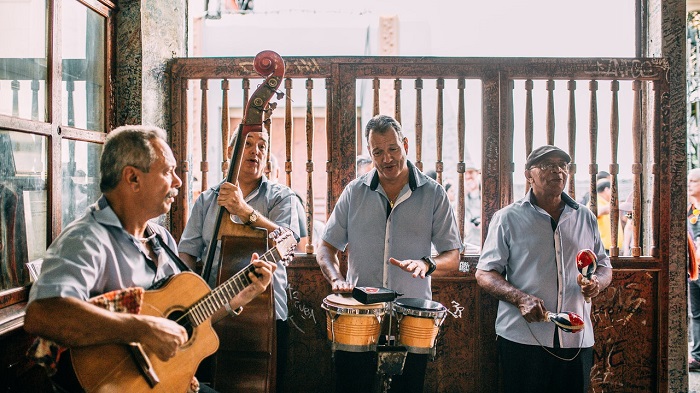
The instruments used in Spanish music are technically different from Latin American ones. Spanish music uses more woodwinds, percussion and string instruments than its counterpart, such as:
- Maracas
- Clarinet
- Guitar
- Castanets
- Sticks
An interesting characteristic of Spanish music is the use of the human body as an instrument. The use of hands through claps, fingers through snaps and feet through stamps appear a lot in Spanish music.
Latin American instruments vary a lot but include percussion, brass, string and keyboards, such as:
- Drums
- Guitars
- Violins
- Piano
- Trumpets
- Guiro
- Maracas
It is a significant difference that Latin American music doesn’t use body parts to create melodies.
Sound Modification
Although both Spain and Latin America have their own versions of popular music, popular contemporary Latin American music seems to focus on sound rather than content. Many recording studios tend to produce more music suited for clubs and dance halls with less concern for lyrics.
Hence, the use of synthesizers and computer modified voices and instruments are favoured. Contemporary Spanish music styles, on the other hand, typically emphasize on the musical talents of the artists and promotes natural sounds.
Spanish Music Genres

Let us start with Spanish music genres:
Flamenco
Flamenco, Spain’s most famous musical style, was born in scenic southern Spain by the Andalusian Gypsies. It’s a cultural phenomenon whose main facets are singing and dancing. Guitar and palo seco accompany flamenco music.
Historically speaking, Flamenco is based on the different folkloric music conventions of southern Spain within the independent community of Andalusia and Murcia. In a more extensive sense, the term is utilized to allude to an assortment of Spanish melodic styles.
José Cadalso’s work, “Las Cartas Marruecos,” is the earliest record of flamenco music and dates back to 1774. In Spain, flamenco was inspired by the Romanis, but its origins are peculiar to the population of Andalusia.
The precise origin of flamenco remains uncertain. The most common theory is that during the sixteenth-century flamenco was formed through intercultural trade between moriscos and gypsies, especially in eastern Andalusia. The Spanish dictionary credits the development of the genre specifically to the Spanish Romans.
Flamenco is now popular throughout the world, especially in the U.S. and Japan. More flamenco schools exist in Japan than in Spain. The Alma Flamenca party is the top visionary of this art movement in El Salvador.
UNESCO named flamenco one of the major works of the verbal and immaterial heritage of humanity on November 16, 2010.
Nowadays, the flamenco style is undergoing a revivalist movement. It is best known for its passionate dancing and colourful dancers, accompanied by a strong and deep rhythm.
It is to be noted that flamenco can also be performed without any forms of dance. Canted jondo (deep song) is always featured in flamenco and not all cante performed are cante jondo.
Jota

Jota is more of traditional Spanish music whose origins lie in Aragon. It beautifully blends guitar, castanets, tambourines and occasionally the flute with performers wearing regional costumes.
The rhythm in it is neither too fast nor too slow. It is a traditional courtship dance with the singing consisting of coplas and improvised verses of satire, love, or piety.
The jota is a musical genre and dance that is popular across Spain. It changes by locale, having a characteristic form in Aragon (where it is the foremost important), Catalonia, Castile, Murcia, Eastern Andalusia, and others.
The jota is danced and sung with castanets as a visual display and performers appear in ethnic outfits.
The jota appears to be 3/4, but some writers claim that the 6/8 is more suited to the choreographic and literary form. Guitars, lutes, bandurrias, and percussion in Castilian style are used to interpret them, while the Galicians use bagpipes, bombos, and drums.
Showy adaptations are sung with territorial ensembles and castanets, in spite of the fact that such things are not utilized in less formal settings. The substance of the tune is very assorted, from patriotism to religion to sexual abuse. In addition to this, the tunes create a sense of neighborhood personality and cohesion.
Fandango
Fandango, another Andalusian music, was created in the 18th century but is considered a folk dance and music style. Couples usually dance to it and the rhythm is similar to flamenco. Castanets, a percussion instrument, handclaps, finger snaps and feet stamps appear a lot in fandango.
Fandango starts slow and then gradually speeds up the music. The passion of the dancers is shown in fandango, by the use of taunts, gestures and steps. When two men do Fandango together, it is seen as a dance-off.
Each region in Spain has developed its own versions of fandango, like Huelva fandango of the Huelva region, and Málaga fandango of the Málaga city.
Sardana

Sardana is a genre native to the Spanish region of Catalonia. It combines basic music and melodies with a dance from Cataluña, with several instruments being played. It became especially popular in the 20th century.
Sardana is accompanied by a dance done in a circle, and it is not as particularly fast as the other dances. Being a circular dance allows it to be quite variable, especially in the number of dancers. The circle becomes bigger and bigger as people join in, meaning it is usually done at parties and cultural events.
The rhythm is calm and slow, with tenora, drums, trumpets and bass being played at the same time. An 11-member band known as “cobla” accompanies Sardana. The band has ten wind instruments, a double bass and a small drum called “tambori.”
Zarzuela
Zarzuela is a unique genre of music. It is thought to have been made during the “Golden Era,” or the “Golden Century” in the 12th century.
Zarzuela combines song with recitation, action and a humorous tone, creating a dynamic combination. It is a sort of popular opera, a kind of entertainment in the Palacio de la Zarzuela, near Madrid.
Zarzuelas have always been divided into two forms: the minor and the major. The minor has only one act and the major has two or more acts. Francisco Barbieri is the biggest contributor to this style.
Classical

Spanish classical music represents some of the world-renowned classical concerts. Many Spanish cities have ginormous venues for classical music, such as the Auditorio Nacinal de Musica, in Madrid, home of the Spanish national orchestra.
Barcelona has the Palau de la Musica. Meanwhile, Valencia has its own Palau de la Musica, where national and local artisans get a chance to show the world their music. In the aforementioned cities, numerous open area concerts are also present.
Reggaeton
This disputable, love-it-or-hate-it genre that’s verifiably prevalent within the Spanish-speaking world is expansive. It’s now also picking up ubiquity within the United States and other nations that do not have a major Spanish-speaking population.
Reggaeton is a mixture of reggae and rap, with Spanish lyrics and the aesthetics of the Caribbean.
Writers, researchers, and specialists dig into reggaeton’s neighborhood roots and its transnational spread. They study the genre’s aesthetics, especially those of hip-hop, and discuss the controversies about color, country, religion, sex, music, and related cultural practices. The study begins with a thorough examination of socioeconomic and auditory currents, which in Puerto Rico converged in the 1990s into reggaeton.
Latin American Music Genres
Now, let us move to Latin American genres of music, which are:
Salsa
The word itself inspires music and dance. Salsa was founded in Cuba in the 1920s as a salsa (sauce) of Cuban son and rumba music styles.
With its birth, it combined many other musical styles into it, such as jazz, rock and mambo. Bass guitar, piano, bongo and conga drums, maracas, and a guiro are all combined to form this beautiful style.
Sometimes orchestra and guiro are used to add their distinct flavours to salsa. The lyrics are often romantic and poetic, which helps a Spanish learner get an excellent taste of the rich language.
Salsa dancing is famous all around the world. Wherever you go, people will have heard about it. The rhythm structure is such that a bass line precedes a downbeat by half a beat, creating a powerful pulse loved by millions.
The golden age of salsa was the 60s when legends such as Celia Cruz, Marc Anthony and others adapted, improvised and experimented with this genre for many years.
Merengue
Merengue is a style made in the Dominican Republic in the 19th century, which earned its fame in the 1960s due to the formation of special regional orchestras and merengue academies.
It is fast, quite fast, making it almost impossible for newbies to dance to it. The rhythm is fast, even though the main musical instruments in it are only drums and a guiro.
Dancing to it requires a partner and it is done with a limping step, meaning weight on the same leg at all times. Numerous arrays of topics and themes are conveyed in this style, making it beneficial for learners.
Tango

Tango, a style produced by the combination of immigrant Europeans and African slave cultures, has a distinct taste. Rio de la Plata, a place between Argentina and Uruguay, is the birthplace of tango.
It is the most popular dance form in the world. It is quite an intense form of music, played in dance halls all around the world. Musical styles such as flamenco, polka, mazurika, hanabera, contradanse, milonga and candombe influenced tango in various forms.
Instruments such as guitar, bandoneon, piano, violin, flute and double bass are used in this form. Solo instruments or ensemble orchestras, which include flutes, pianos, and the double bass can be used to play traditional tango.
The rhythmic pattern of tango is not what we call permanent. It consists of continuous changes that keep on occurring as, in jazz, the music constantly evolves into a new form. Pauses of various lengths, different syncopation, and rhythmic variations constantly appear.
The aforementioned rhythmic changes make it difficult music to dance to. The advantage of tango is its versatility, constantly evolving into new dance forms. Tango electro and tango nuevo show the art form’s versatility.
Bachata
Bachata is another Dominican Republic music form. it is popular not only in Latin America, but also in New York City and even has a dedicated fanbase in Japan. It is one of the most empowered music forms of Latin America.
The dance form in it is quite slick. The dancers must stay extremely close to each other, necessitating lots of hip wiggles and foot-pop flourishes. The lyrics in it tend to be heartbreak, forbidden love and overdramatic romance.
It has a lot of magic moves that must be performed properly by both the dancers, such as loosening the hips and coordination. The rhythmic beat includes trumpets, maracas, drums and sometimes guitars.
Cumbia
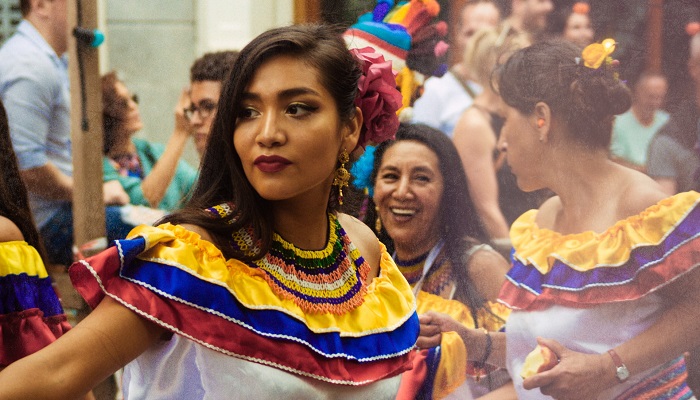
Cumbia is a genre of music whose birthplace is in Colombia. It is Colombia’s national dance form, meaning it is behind much of Colombia’s most representative rhythms.
The form is a unique blend of European, African and indigenous culture. It was born on Colombia’s Caribbean coast and evolved with the intermixing of African, European and indigenous instruments and dance moves.
The music involves the use of traditional-handmade percussion, along with traditional wind and string instruments which give it a hollow and clacky sound.
Dancing to it requires two musical ensembles, a conjunto de cumbia (cumbiamba) or conjunto de gaitas. The cumbia has five instruments, namely cana de millo or pito (a type of clarinet), the tambor mayor (a drum between both legs), the llamadar (a drum on the knee), bombo (a two-headed drum, played with sticks) and a rattle.
The gaitas ensemble has two duct flutes, the gaita hembra and the guitar macho. The dance is usually done at night by couples dancing in a circle with the musicians around them. Nowadays, it is also performed in carnivals and festivities.
Musica folklorica
The word means “folk music,” a word that can hardly show and express the various cultural and indigenous music spread all around Latin America, with each tribe having its own different traditions.
With each unique tradition comes a unique taste of music representing that particular tribe or culture. Cumbia and Vallenatos both represent some of the aspects of this form.
The different countries each have their own different cultures, hence different tastes, leading to innumerable different musical instruments, each with its own distinction.
Some of the regional varieties mix up their own language with Spanish songs. The Ecuadorian speakers give us a perfect example of this phenomenon when they mix few choice Kichwa words into their speech.
Where can you hear Spanish Music?

The most popular styles in Spanish and Latin American music have been discussed. Now, let us focus on where they are generally played.
At theatres, festivals, and squares, Spanish music is a usual fixture. An example of it is the famous seven-day long music festival Singular Fest, which occurs in La Plaza España, in Seville, Spain.
Spanish people from all around the country meet up in Seville for this event and relish such genres as flamenco. This music represents Spain’s traditions, cultural wealth, and history, making people love it even more.
In contrast with its counterpart, traditional Latin American music is played at competitions, events, or conventions, such as the World Latin Dance Cup, the Montreal Salsa Convention, the Canada Salsa and Bachata Congress, and the Salsódromos.
Furthermore, Latin American music is heard at social events with special themes. People use popular genres such as salsa, merengue, bachata, and even tango for celebrating birthdays, graduations, and friendly get-togethers.
Spanish traditional music has been cultivated, developed, maintained and nurtured at all different levels: local, regional and national.
- The tradition of pueblos, representing the country towns and countryside villages, shows the local level.
- The autonomous regions represent the regional level of music.
- In large cities such as Valencia, Madrid, Barcelona and Sevilla, the music takes the form of national identity.
